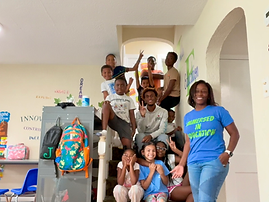- Immersed In Education

- Nov 6
- 3 min read
In today’s fast-paced world, education is evolving rapidly. One of the most significant changes is the rise of online tutoring. This method of learning offers flexibility, personalized attention, and access to a wide range of resources. But why exactly is online tutoring worth it? Let’s dive into the many advantages of tutoring online and understand how it can transform the learning experience.
The Advantages of Tutoring Online: Flexibility and Convenience
One of the biggest draws of online tutoring is its flexibility. Unlike traditional tutoring, which often requires traveling to a specific location at a set time, online tutoring allows students to learn from anywhere. Whether at home, a library, or a quiet café, students can connect with tutors without the hassle of commuting.
This convenience means that students can schedule sessions around their busy lives. For example, a high school student balancing extracurricular activities and homework can find a time that fits their schedule. Parents also appreciate this flexibility, as it reduces the need to coordinate transportation.
Additionally, online platforms often offer 24/7 availability, making it easier to get help exactly when it’s needed. This is especially useful for last-minute exam preparation or homework questions.

Personalized Learning Experience with Online Tutoring
Another key advantage of tutoring online is the ability to tailor lessons to each student’s unique needs. Tutors can assess a student’s strengths and weaknesses and create a customized plan that targets specific areas for improvement.
For example, if a student struggles with algebra but excels in geometry, the tutor can focus more on algebraic concepts. This personalized approach helps students build confidence and improve faster than in a one-size-fits-all classroom setting.
Online tools also enhance personalization. Interactive whiteboards, screen sharing, and digital quizzes allow tutors to engage students in various ways. These tools make lessons more dynamic and help cater to different learning styles, whether visual, auditory, or kinesthetic.
How Online Tutoring Benefits Academic Performance
Research shows that students who receive tutoring often see significant improvements in their grades and understanding of subjects. Online tutoring is no exception. The focused attention and customized lessons help clarify difficult concepts and reinforce learning.
For instance, a student preparing for standardized tests like the SAT or ACT can benefit from targeted practice and strategies provided by an experienced online tutor. This focused preparation often leads to higher scores and better college admission prospects.
Moreover, online tutoring encourages consistent study habits. Regular sessions create a routine that helps students stay on track with their coursework and avoid last-minute cramming.

Cost-Effectiveness and Accessibility of Online Tutoring
Online tutoring often proves to be more affordable than traditional in-person tutoring. Without the need for physical space or travel, tutors can offer competitive rates. This makes quality education accessible to a broader audience.
Additionally, online tutoring breaks down geographical barriers. Students in remote or underserved areas can connect with expert tutors from around the world. This access to diverse tutors means students can find someone who matches their learning style and subject needs perfectly.
Many platforms also offer group sessions or subscription plans, providing even more cost savings. These options make it easier for families to invest in ongoing educational support without breaking the bank.
Building Confidence and Motivation Through Online Tutoring
Beyond academic improvement, online tutoring helps build a student’s confidence. Personalized attention and positive reinforcement encourage students to ask questions and engage actively in their learning.
For example, shy students who may hesitate to speak up in a classroom often feel more comfortable interacting one-on-one with a tutor online. This safe environment fosters curiosity and a growth mindset.
Tutors also serve as mentors, helping students set realistic goals and celebrate their progress. This motivation can lead to a lifelong love of learning and better academic outcomes.
For those interested in exploring these advantages further, the online tutoring benefits are well documented and can provide additional insights into how this educational approach can help students succeed.
Embracing the Future of Learning with Online Tutoring
The educational landscape is changing, and online tutoring is at the forefront of this transformation. Its many advantages - from flexibility and personalization to cost-effectiveness and confidence-building - make it a valuable tool for learners of all ages.
Whether you are a student struggling with a particular subject or a parent seeking extra support for your child, online tutoring offers a practical and effective solution. By embracing this modern approach, learners can unlock their full potential and achieve academic success in a way that fits their lifestyle.
As technology continues to advance, the possibilities for online tutoring will only grow, making it an investment worth considering for anyone serious about education.
we offer online tutoring: Immersedonline.org or call 410-861-0441 Today









